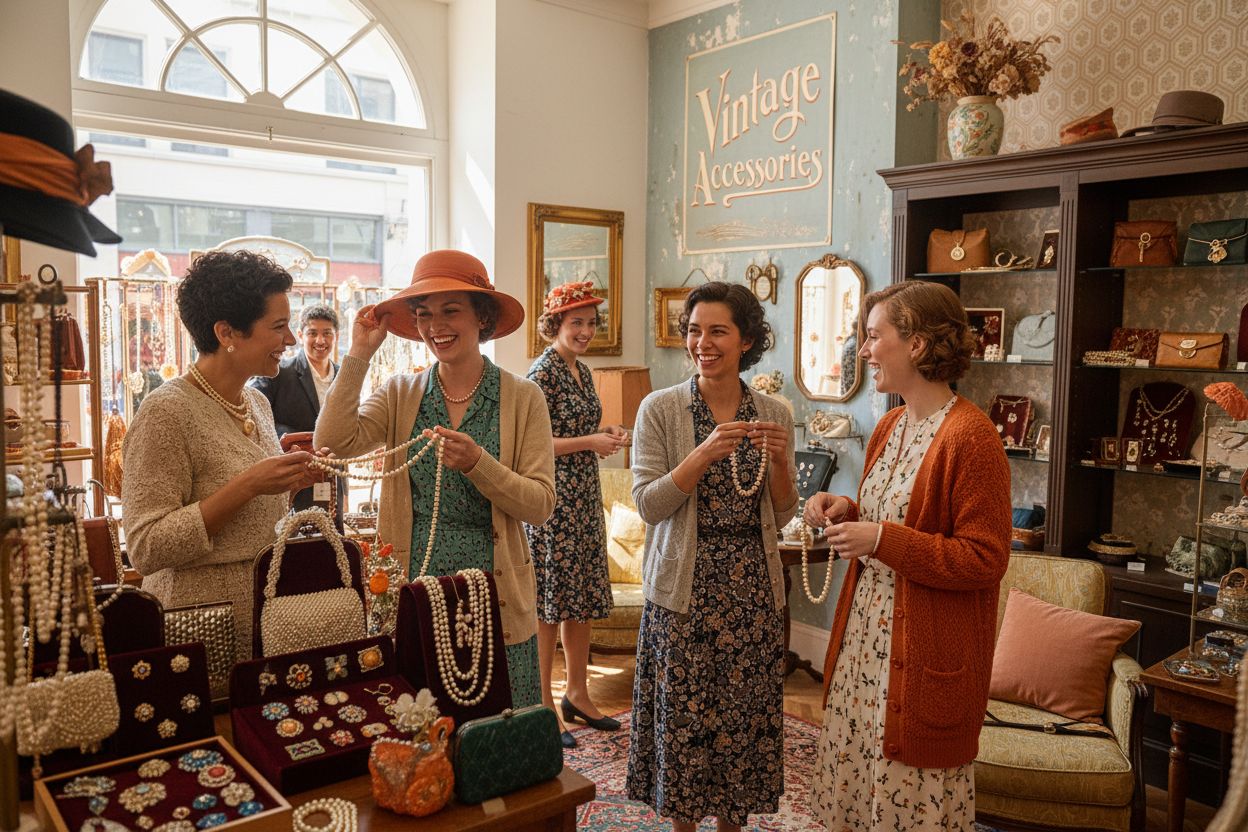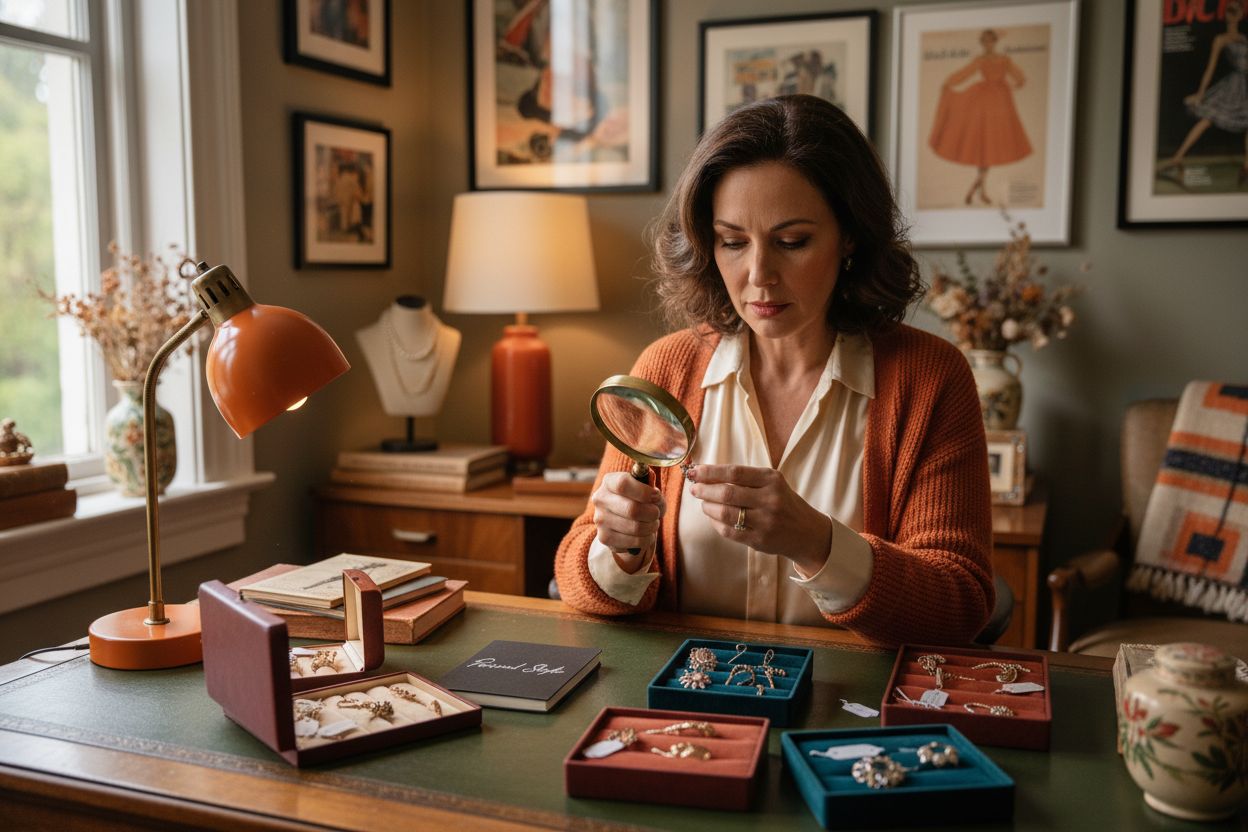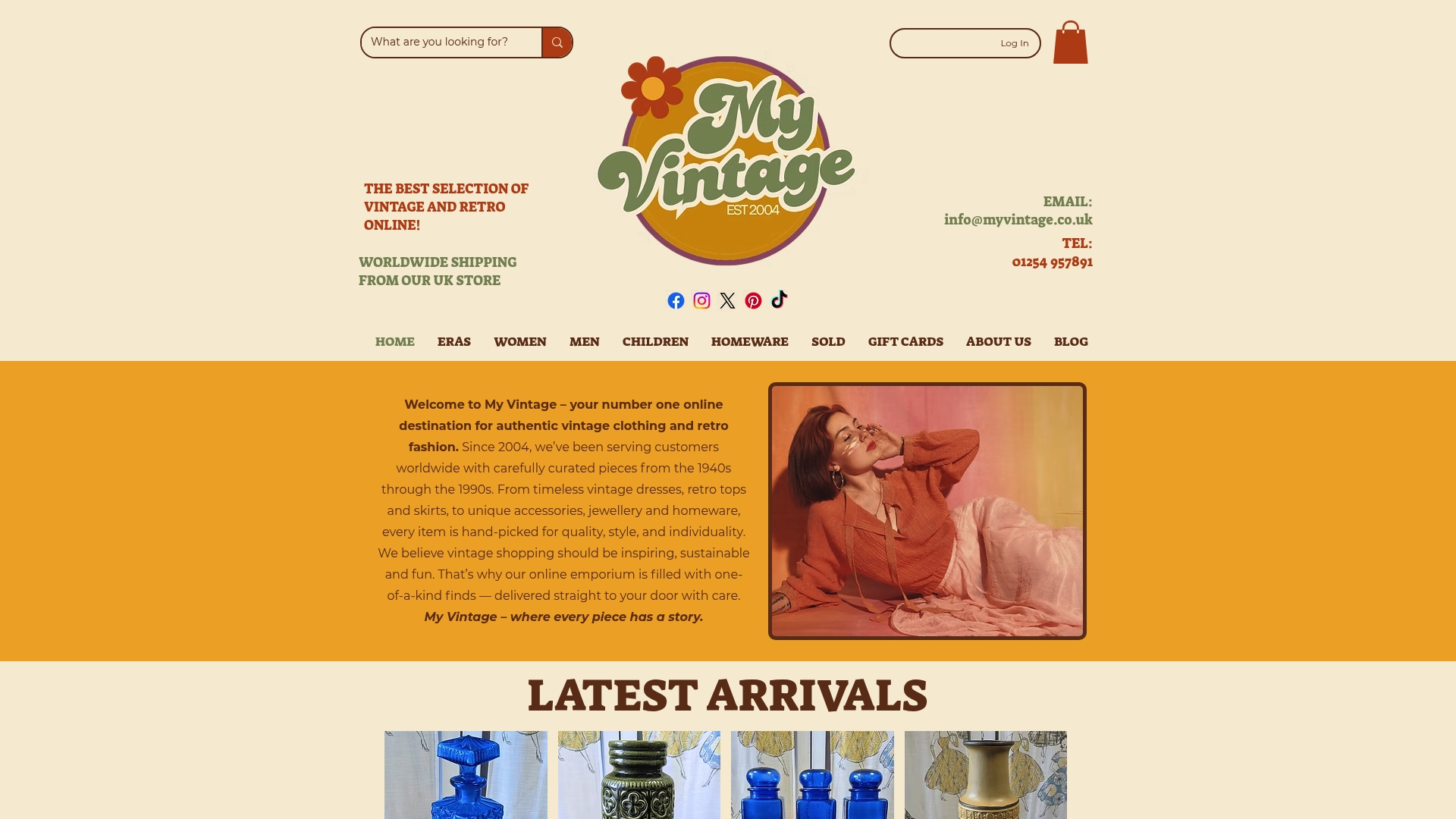The Role of Vintage Accessories in Fashion
- Emma

- Oct 10
- 9 min read

Vintage accessories are more than mere fashion leftovers from previous decades. A genuine vintage accessory must be at least 20 years old and showcase the authentic craftsmanship and design from its original era. That sounds rare enough, but the real twist comes when you realise these pieces are not just about style or nostalgia. Every clasp and stitch opens a window to social history, cultural shifts, and artistry that modern accessories simply cannot match.
Table of Contents
Quick Summary
Defining Vintage Accessories: What Are They?
Vintage accessories represent more than just fashion items from previous decades. These carefully curated pieces embody the cultural, artistic, and social expressions of their specific historical periods. According to the Victoria and Albert Museum, vintage accessories must typically be at least 20 years old and authentically represent the design aesthetics and manufacturing techniques of their original era.
The Unique Characteristics of Vintage Accessories
Understanding vintage accessories requires recognising their distinctive qualities. These pieces are not merely second-hand items but carefully preserved artifacts that tell compelling stories about fashion history. Key characteristics include:
Authentic construction techniques from specific historical periods
High-quality craftsmanship reflecting traditional manufacturing methods
Unique design elements representative of their original decade
Vintage accessories encompass a wide range of items beyond clothing, including jewellery, handbags, scarves, hats, belts, and decorative pieces that capture the essence of past fashion movements. Each item serves as a tangible connection to the aesthetic and cultural sensibilities of its time.
To further clarify the unique features that define genuine vintage accessories, the table below outlines their distinguishing characteristics and why each is significant to collectors and enthusiasts.
Cultural and Historical Significance
Beyond their aesthetic appeal, vintage accessories carry profound cultural narratives. They represent more than fashion statements they are material memories that document societal changes, technological advancements, and artistic expressions of different eras. Whether it is a 1950s beaded clutch or a 1970s statement brooch, these accessories provide insights into the social dynamics and design philosophies of their respective periods.
For those interested in exploring unique vintage accessory styles, read more about retro accessory charm, which offers deeper insights into the world of vintage fashion collectibles.
Unlike mass-produced contemporary accessories, vintage pieces are often singular, handcrafted items that showcase exceptional artisanal skills and design creativity. Their rarity and historical significance make them treasured additions to any fashion enthusiast’s collection, bridging the gap between past and present aesthetic expressions.
The Cultural Importance of Vintage Accessories
According to the Museum of London, vintage accessories are powerful storytellers that transcend mere fashion statements, serving as tangible archives of social history and cultural evolution. They represent far more than decorative objects they are intricate narratives woven through design, material, and craftsmanship.
Preserving Social Memory and Identity
Vintage accessories function as material witnesses to specific historical moments, capturing the zeitgeist of their respective eras. Key sociological functions include:
Documenting societal transformations and cultural shifts
Representing marginalised voices and subcultural movements
Providing insights into gender roles and social hierarchies
These pieces do not merely reflect fashion trends they encapsulate the complex emotional and psychological landscapes of their times. A 1940s utility brooch, for instance, might represent wartime resilience, while a 1960s psychedelic scarf could symbolise youth rebellion and counterculture movements.
Artistic and Design Heritage
Beyond social documentation, vintage accessories embody exceptional artistic craftsmanship. They represent pinnacle moments of design innovation, showcasing techniques and aesthetic philosophies that have significantly influenced contemporary fashion. Intricate beadwork, hand-embroidered details, and meticulously constructed accessories reveal the extraordinary skill of artisans from different historical periods.
Discover extraordinary vintage accessory examples that highlight the remarkable design evolution across decades. Each piece tells a unique story of creativity, technological capability, and cultural expression.
Ultimately, vintage accessories serve as bridges connecting past and present, allowing contemporary individuals to engage directly with historical narratives through tangible, wearable artifacts. They invite us to appreciate not just their aesthetic beauty, but the rich, complex stories embedded within their very fabric.
Sustainable Fashion: Why Vintage Matters
According to the British Fashion Council, vintage fashion represents a critical pathway towards more environmentally conscious and responsible clothing consumption. By embracing vintage accessories, individuals can significantly reduce their fashion environmental footprint while celebrating unique, timeless design.
Environmental Impact and Resource Conservation
Sustainable fashion through vintage accessories offers profound ecological benefits. The production of new clothing items demands substantial resources, whereas vintage pieces represent a form of recycling that minimises waste and energy consumption. Key environmental advantages include:
Reducing textile waste and landfill contributions
Minimising carbon emissions associated with new garment production
Extending the lifecycle of existing fashion pieces
Each vintage accessory purchased represents a direct intervention in the fashion industry’s typical linear consumption model, transforming it into a more circular and regenerative system.

Ethical Consumption and Economic Resilience
Beyond environmental considerations, vintage accessories support ethical consumption practices. They challenge mass production paradigms by valuing craftsmanship, durability, and individual expression over disposable, trend-driven fashion. These pieces represent economic resilience, offering consumers high-quality items that transcend temporary fashion cycles.
Learn more about the ultimate sustainable fashion choice, which explores how vintage fashion contributes to more responsible consumer behaviour.
Vintage accessories are not merely nostalgic artifacts they are powerful statements of environmental stewardship and conscious consumption. By choosing these carefully preserved pieces, individuals participate in a global movement towards more sustainable, thoughtful fashion practices that honour both historical craftsmanship and contemporary ecological imperatives.
This table compares the environmental and ethical benefits of choosing vintage accessories, making it easier to understand why vintage matters in the context of sustainable fashion.
How Vintage Accessories Influence Modern Design
According to the Visual Arts Data Service, vintage accessories represent far more than historical artifacts they are dynamic design inspirations that continually reshape contemporary fashion aesthetics. Modern designers frequently draw profound creative insights from these meticulously crafted pieces, translating historical techniques and visual languages into innovative contemporary expressions.
Design Language and Creative Reinterpretation
Vintage accessories function as comprehensive design archives, offering contemporary creators intricate blueprints of historical craftsmanship and aesthetic philosophy. Key design influences include:
Preservation of traditional construction techniques
Exploration of forgotten colour palettes and material combinations
Reinterpretation of historical silhouettes and decorative elements
These historical references allow designers to create collections that are simultaneously nostalgic and forward-looking, bridging temporal design boundaries through thoughtful creative translation.
Material Innovation and Craftsmanship Revival
Contemporary designers increasingly view vintage accessories as repositories of exceptional craftsmanship. Each piece represents a potential masterclass in design technique, material manipulation, and aesthetic expression. By studying intricate beadwork from the 1920s or examining complex millinery structures from mid-century collections, modern creators learn and adapt traditional skills to current design contexts.
Explore vintage accessory style elevation techniques that demonstrate how historical design principles continue to inspire contemporary fashion innovation.
Ultimately, vintage accessories serve as critical conduits between past and present design languages. They remind us that fashion is an ongoing dialogue, where each era builds upon and reinterprets the creative achievements of previous generations, ensuring a continuous, dynamic evolution of aesthetic expression.
Collecting Vintage: Understanding Its Value and Appeal
Collecting vintage accessories represents a sophisticated art form that transcends mere accumulation, transforming into a nuanced exploration of historical craftsmanship, personal expression, and cultural preservation. Vintage collecting emerges as a passionate pursuit that connects individuals with the rich narratives embedded within carefully preserved fashion artifacts.
Investment and Emotional Value
Vintage accessories offer multifaceted value that extends far beyond monetary considerations. Key value dimensions include:
Potential financial appreciation over time
Emotional connection to historical periods
Unique storytelling through material culture
Preservation of design heritage
Collectors are not simply purchasing objects they are curating personal museums that capture the aesthetic and cultural essence of specific historical moments. Each piece represents a fragment of design history, carrying intrinsic stories of craftsmanship, social dynamics, and artistic innovation.

Authentication and Expertise
Successful vintage collecting demands deep knowledge, discerning eye, and commitment to understanding provenance. Serious collectors develop sophisticated skills in identifying authentic pieces, understanding manufacturing techniques, and recognising genuine historical artifacts. This expertise transforms collecting from a hobby into an intellectual pursuit that requires continuous learning and passionate research.
Explore the deeper role of vintage in personal style, which offers insights into building a meaningful vintage collection.
Ultimately, vintage accessory collecting represents a profound dialogue between past and present. It celebrates individual creativity, honours historical craftsmanship, and allows collectors to become custodians of fashion history, preserving remarkable design legacies for future generations to appreciate and learn from.
Unlock the True Value of Vintage Accessories with My Vintage
Understanding the importance of vintage accessories means recognising the desire for authenticity, individuality, and sustainability in your personal style. The article highlights how finding genuine historical pieces that tell a story and elevate your fashion expression can be challenging, especially when seeking quality, craftsmanship, and uniqueness in every item you choose.
Ready to bridge the gap between past and present? Experience the difference with carefully curated vintage accessories and apparel from the trusted team at My Vintage. Embrace rare finds and timeless pieces that reflect true heritage, all while contributing to eco-friendly and conscious shopping practices.

Visit My Vintage today to discover historically significant accessories and authentic vintage clothing. Jump into our insights on the deeper role of vintage in personal style or find inspiration in our guide to vintage accessory style elevation techniques. Do not miss your chance to add iconic, storied pieces to your collection. Your next statement accessory is waiting – start exploring now.
Frequently Asked Questions
What qualifies as a vintage accessory?
Vintage accessories are items that are typically at least 20 years old and authentically represent the design aesthetics and manufacturing techniques of their original era. They include items such as jewellery, handbags, scarves, hats, and belts, showcasing unique craftsmanship and historical significance.
Why are vintage accessories important in fashion?
Vintage accessories serve as important cultural artifacts that document social history and evolution in fashion. They encapsulate unique narratives about societal changes, artistic expression, and craftsmanship from different eras, offering insights into the aesthetics and cultural sensibilities of their time.
How do vintage accessories contribute to sustainable fashion?
By embracing vintage accessories, consumers can reduce textile waste, minimise carbon emissions associated with new garment production, and support ethical consumption practices. These pieces contribute to a circular fashion economy by extending the lifecycle of existing items, promoting environmental consciousness.
What is the role of vintage accessories in modern design?
Vintage accessories act as dynamic inspirations for contemporary designers. They preserve traditional construction techniques and enable the exploration of forgotten colour palettes and materials, allowing designers to reinterpret historical aesthetics into innovative fashion expressions.
Recommended








Comments